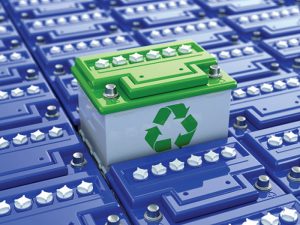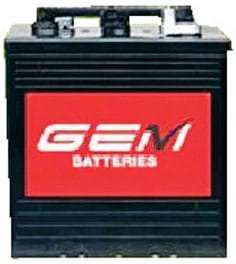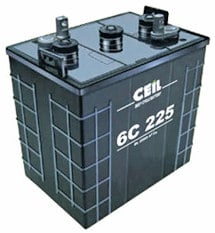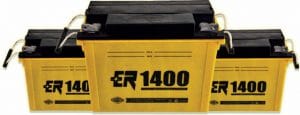 The advent of e-vehicles has pushed the world to the brink of a battery revolution that promises to reshape the future of energy.
The advent of e-vehicles has pushed the world to the brink of a battery revolution that promises to reshape the future of energy.
By Shruti Mishra
In the past few years, innovations in the field of batteries have been pretty astounding, primarily led by the popularity of e-vehicles. As public concern about pollution from gasoline-powered cars increases, researchers predict that a historic shift in the automobile sector is under way, which will lead to the widespread adoption of e-vehicles in the coming decade. Quite a few reports suggest that e-vehicles will soon become mainstream.
According to the Bloomberg New Energy Finance (BNEF) report, globally, battery prices fell 35 per cent last year and are on a trajectory to make unsubsidised electric vehicles as affordable as their gasoline counterparts in the next six years.
India is no exception. Here, too, policy makers and automobile manufacturers are pumping huge amounts of money into promoting e-vehicles to achieve a safe and clean environment. India saw a 37.5 per cent growth in the sale of e-vehicles in 2015-16. In addition, the government is aiming to make India a 100 per cent e-vehicle nation by 2030. All these figures paint a very optimistic picture for the future of e-vehicle batteries in India.
Let’s have a look at five trending innovations in the battery technology for electric vehicles that promise lightweight, compact and affordable batteries.
Lithium-ion batteries (LIB)
These currently dominate the market for e-vehicle batteries, as many automobile giants like Tesla and Nissan have invested heavily in this technology. The LIBs primarily use graphite or silicon anodes and a liquid electrolyte. They are extremely lightweight and have a high cyclability.
The energy density of LIBs compared to other emerging battery technologies is quite low. These batteries also need improvements in safety and durability, along with cost reductions.
Solid state batteries
Many researchers believe that solid state batteries represent a game-changing technology, as they provide a very long shelf life and eliminate the need for bulky and expensive cooling mechanisms. These batteries are composed of solid electrolytes, which prevent electrolyte leaks and fires. In addition, solid state batteries can operate over a wide temperature range. Leading automobile multinationals like Toyota and Volkswagen are looking to solid state batteries to power their electric cars.
Aluminium-ion batteries
Introduced in 2015, aluminium-ion batteries promise a high performance at a lower cost. Made of an aluminium anode and graphite cathode, these batteries are a safe alternative to many commercial batteries in wide use today. These batteries have a very high charge storage capacity, and can withstand more than 7,500 cycles without any loss of capacity.
Lithium-sulphur batteries (Li/S)
Lithium-sulphur batteries are known for their high mechanical robustness and safety. They are made up of a lithium anode and a sulphur-carbon cathode and, theoretically, offer a higher energy density and a lower cost than LIBs. Low cyclability, caused by expansion and harmful reactions with the electrolyte, is the major downside of this battery.
Metal-air batteries
The only reason metal-air batteries are receiving any attention from the automobile sector is that these use air as the cathode, which drastically reduces their weight. In terms of performance, these batteries have issues with cyclability and lifetime.
Buying tips:
- As e-vehicles (EV) are powered only by energy stored in the on-board batteries, always go for high ampere-hour capacity so that vehicles can cover larger distances on a single charge.
- Sometimes, an e-vehicle’s batteries need to be charged away from home, so they must be capable of being charged rapidly
Why EV battery manufacturing is gaining traction in India
- Reduction in carbon footprint
- Reduced dependence on crude oil imports
- Supports ‘Make in India’
- Will build a new technology knowledge hub in India
A few e-vehicle batteries that are manufactured in India
Model: Solar GEL maintenance-free battery, Manufacturer: Relicell
Relicell Solar batteries are maintenance-free batteries with a special gel electrolyte made by mixing acid electrolyte with pyrogenic silica. The design uses pasted plate grids with a large surface area, with grids cast from a special lead-calcium-tin-silver alloy that provides high corrosion resistance, and a special micro-porous synthetic separator.
These batteries provide a much higher cyclic life and operate better in a partial state of charge and in high ambient temperatures. They’re designed to operate in the environmental conditions prevalent in the Indian subcontinent, Africa and much of Southeast Asia.
Apart from electric and recreational vehicles, these batteries are also used in telecommunication power supplies, boats and other marine equipment, radar signalling systems, solar street and traffic lights, and medical equipment.
 Key features
Key features
- Design life of 10 years at 27°C.
- High-purity lead-calcium-tin-silver alloy for good corrosion resistance
- Micro-porous synthetic separators provide low electrical resistance
- Addition of phosphoric acid for improved cyclic life
- Cycle life of 500 cycles at 100 per cent DoD and 1500 cycles at 40 per cent DoD
- Very low thermal runaway effect due to silica gel composition
- Highly pure material ensures low self-discharge
- Completely leak-proof and maintenance-free
- High impact ABS casing
Contact: www.relicellbattery.com
Model: EPSILON C-CAT, Manufacturer: Firefly Batteries Pvt Ltd
EPSILON C-CAT batteries are designed for long life. They are capable of deep cycling, low self-discharge, good charge acceptance and come ready to use, having been factory-charged. These batteries are approved by ICAT.
 Key features
Key features
- Container material: Polypropylene
- Nominal voltage: 12V
- Operating temperature range:
1. Discharge: -20°C to 50°C
2. Charge: -20°C to 50°C
3. Storage: -20°C to 40°C
Contact: www.fireflybattery.in
Model: GGC2, Manufacturer: GEM Battery
GEM’s golf-cart batteries assure high efficiency and dependable service life. These are made with tubular positive plates consisting of low maintenance alloy grids and properly balanced active material. Heat-sealed polypropylene containers and covers ensure leak-proof batteries, thereby ensuring operator safety.
 Key features
Key features
- Dimensions (LxWxH): 258mm x 178mm x 277mm
- Voltage: 6V
- Acid volume: 0.005m3
- Dry weight: 22.5kg
- Cranking performance: 220Ah
Contact: www.gembatteries.com
Model: CEIL 6C225, Manufacturer: Exide (India)
The CEIL 6C225 is a blend of improved high-density paste formulation and a unique glass mat separator for better retention of active materials. This ensures longer life of the battery. The battery is designed and manufactured to perform at its best under deep cyclic operations. It is suitable for a wide range of golf carts, floor cleaners and special electric vehicles.
 Key features
Key features
- Nominal voltage: 6V
- Approx battery weight: Dry battery: 24 kg (+/-5 per cent); Charged battery 30kg (+/-5 per cent)
- Overall dimensions (LxWxH): 264mm x 182mm x 285mm
- Electrolyte volume: 2 litres/cell
- Energy density (weight/kg): 31.0-33.0
- Final electrolyte specific gravity +/- 0.0005: 1.28
Contact: www.exideindustries.com
Model: ER 1400, Manufacturer: Trontek
Trontek provides electric rickshaw batteries that are long lasting and are of good quality. These batteries are tested and approved by the International Center for Automotive Technology (ICAT) at Manesar. Safe and are standardised in nature, they can also be recharged up to 500 times while in use. The raw material of these high-performance batteries is sourced from Australia.
 Key features
Key features
- Nominal voltage: 12V
- Nominal capacity (5HR): 140Ah
- Dimensions (LxWxH): 360mm x 172mm x 260mm
- Total weight: 27.2kg (with acid)
- Max. starting current: < 100A
- Max. working current: < 25A
Contact: www.trontek.com



























